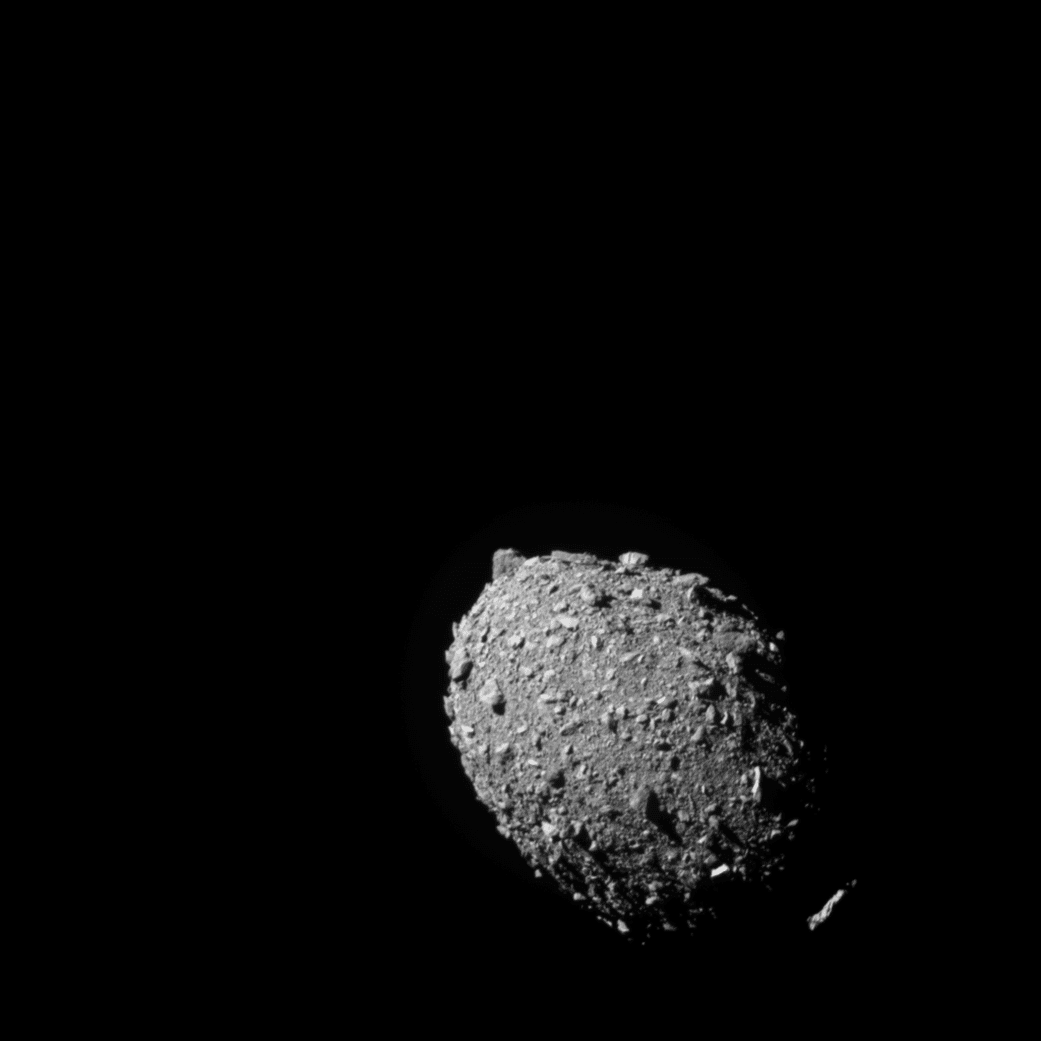NASA's DART mission hit an asteroid in the first planetary defense test mission

After ten months in space, NASA's DART (Dual Asteroid Deorbiting Experiment) mission — the world's first demonstration of planetary defense (Earth protection) technology — successfully collided with its target asteroid on Monday, NASA's first attempt to change motion of an asteroid in space. Mission control announced the successful collision at 19:14 p.m. ET.
As part of NASA's overall planetary defense strategy, DART's collision with a dimorphous asteroid demonstrates a mitigation technique applicable to protecting Earth from an incoming asteroid or comet, should one be discovered.
"DART is an unprecedented success for planetary defense, but it is also a mission of unity with real benefit to all of humanity," said NASA Administrator Bill Nelson. "When we at NASA explore the universe and our home planet, we also work to protect this home, and this international collaboration has turned science fiction into real science, which demonstrates one way to protect the planet."
DART's target was the lunar asteroid Dimorphos, a small body only 160 meters in diameter. It orbits a larger asteroid called Didymus that is 780 meters in diameter.
The mission's one-way flight demonstrated that NASA could successfully steer a spacecraft into a targeted collision with an asteroid to deflect it, a technique known as kinetic impact.
The investigation team will now observe Dimorphos using ground-based telescopes to verify that the DART impact changed the asteroid's orbit around Didymos. The researchers predict that the impact will shorten Dimorphus' orbit by about XNUMX percent, or about ten minutes. Accurately measuring the degree of deflection of the asteroid is one of the main goals of the full-scale experiment.
"Planetary defense is a unifying global activity that affects everyone who lives on Earth," said Thomas Zerbaken, deputy director of the Science Mission Administration at NASA Headquarters in Washington. "Now we know we can direct a spacecraft with the precision needed to hit even a small body in space. A small change in its speed is all we need to significantly change the trajectory of the asteroid."
The spacecraft's only instrument, the DRACO camera, along with a sophisticated guidance, navigation and control system working together with the SMART Nav algorithms, allowed DART to detect the two asteroids, differentiate between them and target the smaller body.
These systems guided the box-shaped spacecraft that weighs 570 kg on its last 90,000 km in space into Dimorphus, a deliberate crash at a speed of about 22,530 km/h to slightly slow the asteroid's orbital speed. The latest DRACO images, taken by the spacecraft Seconds before impact, reveal Dimorphus face in detailed close-up.
Fifteen days before impact, DART's Italian-made LICIACube cubesat was launched from the spacecraft to take pictures of DART's impact and the cloud of material ejected from the asteroid as a result. Along with the DRACO images, the LICIACube images are designed to show the results of the impact to help researchers better characterize the effectiveness of the kinetic impact in deflecting asteroids. LICIACube does not have a large antenna, so the images will be broadcast to Israel one by one in the coming weeks.
"DART's success is a significant addition to the essential toolbox we must have to protect Earth from a devastating asteroid impact," said Lindley Johnson, NASA's planetary defense officer. "It proves that we are no longer powerless to prevent this type of natural disaster. Together with improved capabilities that will accelerate the finding of the remaining dangerous asteroids through our next planetary defense mission, the Near-Earth Object Surveyor, a mission that will come after DART can give us what we need to save the day."
The pair of asteroids is 11 million km from Earth, and a global team uses dozens of telescopes located around the world and in space to observe the asteroid system. In the coming weeks, they will characterize what was emitted from the impact and precisely measure the change in Dimorphus' trajectory to determine the degree of effectiveness of the diversion. The results will help to validate and improve scientific computer models that are essential to predicting the effectiveness of this technique as a reliable method for deflecting asteroids.

One response
Let's hope we didn't design them in a vindictive way